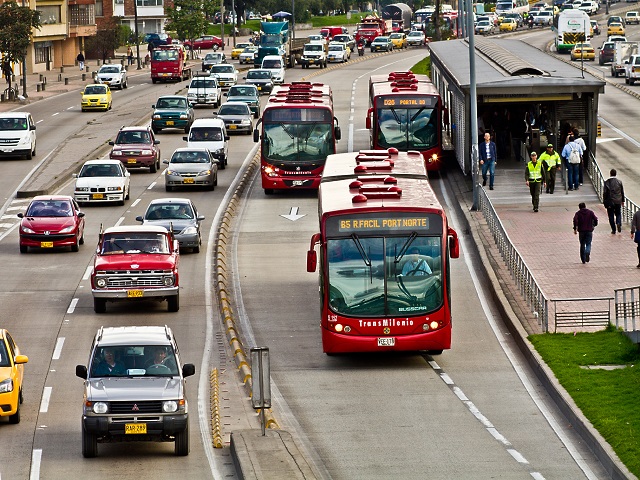Kenya has been inspired by Colombia’s capital, Bogota bus rapid transit system in an attempt to decongest Nairobi city, its metropolitan area transport authority says.
The plan to actualise the system is quickly gaining pace with plans to start its implementation set for December.
The bus rapid transit model will be similar to the one being used in Bogota city.
The TransMilenio BRT System as it is being called in Colombia,has been developed using a Build, Operate and Transfer (BOT) concession strategy and has today seven trunk lines, 1,080 buses with 74 feeder routes and 114 stations in operation. The average number of bus passengers on rush hour is 170,565.
In Kenya the system will be implemented using the first fleet of 50 modular buses targeting five routes including Nairobi city centre the Thika Superhighway, Jogoo Road, Mombasa Road and Outer Ring Road. This routes will have have lanes reserved for buses.
In the city centre, the bus rapid lanes will be constructed along roads like Haile Selassie, Moi Avenue, Kenyatta Avenue and University Way,
The Nairobi Metropolitan Area Transport Authority (Namata) said that the Bogota bus rapid transit model is more advanced than what Tanzania’s Dar es Salaam has.
“We are adopting a more elaborate bus transit system than what we saw in Dar es Salaam. We noted some weaknesses in the system such as tardiness in bus arrivals and departures,” said Namata CEO James Ng’ang’a.
Commuters using rapid transit system will use cards for payment on the buses that have a capacity of about 160 passengers.
Currently, Dar es Salaam remains the only town to adopt the Rapid Transit Bus system that has greatly helped ease traffic congestion in the city.
Recent studies have indicated that Nairobi leads in the top five cities in Africa with the worst traffic. It is followed by Cairo in Egypt and South African cites of Pretoria,Johannesburg, Cape Town and Durban.
Government statistics show that the time wasted in traffic jams represents a cost of $578,000 (Sh58.4 million) a day in lost productivity. That’s more than $210 million (Sh2.1billion) a year.

